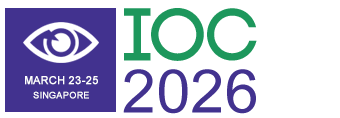Title : The effectiveness of an international ophthalmology teaching series in bridging the gap in the medical school curriculum
Abstract:
Background: Declining confidence in ophthalmology among junior doctors suggests a gap in the medical school curriculum (Scantling-Birch et al., 2022). Limited GMC guidance (Kanagasundaram et al., 2025) and discrepancies (Devine, O et al., 2020) between undergraduate teaching worsen this. Given ophthalmology’s rapid advancements (Advancements in ophthalmology technology, 2024), and prevalence of sight-threatening conditions, a stronger educational foundation is essential, highlighting the need to explore an effective teaching intervention.
Aim: To assess the effectiveness of an online Ophthalmology teaching series to medical students.
Methods: We ran a three-month international, peer-led ophthalmology teaching involving seven sessions for medical students and doctors. Attendees completed pre- and post-questionnaires, including 5-point Likert scales, assessing satisfaction with their medical school curriculum, teaching exposure, need for more teaching and changes in confidence and knowledge from the session.
Results: Across seven teaching sessions, we had 424 participants from 33 medical schools and organisations across ten countries, with 109 unique attendees. Pre and post-questionnaires received 210 and 211 responses, respectively (n=424, response rate 49%). Most attendees and respondents were fourth-year medical students (n=210, 30%). Most participants believe ophthalmology teaching is required for their careers (n=210, 72.9%), with 46% (n=210) interested in pursuing ophthalmology. 31.9% of participants received under two hours of ophthalmology teaching, and 50% had placements lasting one day to one week. Satisfaction with current teaching and placement was 2.37 and 2.24 out of 5 respectively. Following sessions, mean confidence increased from 2.27 to 3.85, improving knowledge in 18 out of 21 questions. Average recommendation rating for the teaching series was 4.57 out of 5.
Conclusion: Results highlight limited ophthalmology exposure and low satisfaction in medical schools. This peer-led online Ophthalmology teaching improved confidence and knowledge and was highly rated. Findings support the need for more ophthalmology teaching in medical schools to inspire future ophthalmologists and better prepare incoming doctors to manage eye conditions.




